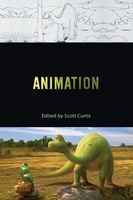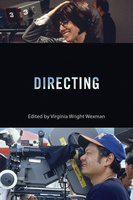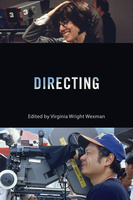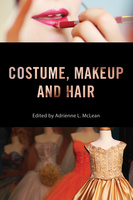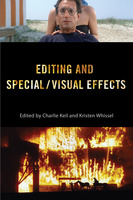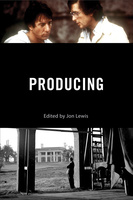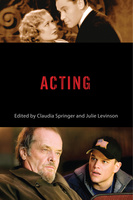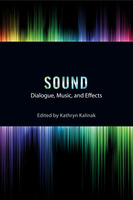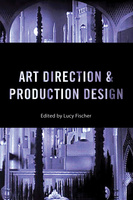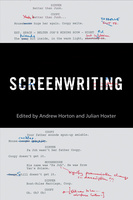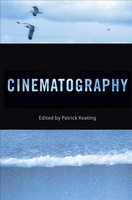Showing 1-11 of 11 items.
Animation
Edited by Scott Curtis
Rutgers University Press
The last installment of the acclaimed Behind the Silver Screen series, Animation explores the variety of technologies and modes of production throughout the history of American animation. Drawing on archival sources to analyze the relationship between production and style, this volume provides also a unique approach to understanding animation in general.
Directing
Edited by Virginia Wright Wexman
Rutgers University Press
Directing examines a diverse range of classic and contemporary directors, including Orson Welles, Tim Burton, Cecil B. DeMille, Steven Soderbergh, Spike Lee, and Ida Lupino, and demonstrates how a century’s worth of Hollywood directors have negotiated changing film industry practices while harnessing the creative contributions of many collaborators.
Directing
Edited by Virginia Wright Wexman
Rutgers University Press
Directing examines a diverse range of classic and contemporary directors, including Orson Welles, Tim Burton, Cecil B. DeMille, Steven Soderbergh, Spike Lee, and Ida Lupino, and demonstrates how a century’s worth of Hollywood directors have negotiated changing film industry practices while harnessing the creative contributions of many collaborators.
Costume, Makeup, and Hair
Edited by Adrienne L. McLean
Rutgers University Press
From the Behind the Silver Screen series, Costume, Makeup, and Hair charts the development of these three crafts in the American film industry from the 1890s to the present. Each chapter examines a different era, revealing how these artistic fields have fostered creative collaboration and improvisation, often fashioning striking looks and ingenious effects out of limited materials, while continually adapting to new technologies, fashions, and economic conditions.
Editing and Special/Visual Effects
Edited by Charlie Keil and Kristen Whissel
Rutgers University Press
Editing and Special/Visual Effects brings together a diverse range of film scholars who trace how the arts of editing and effects have evolved in tandem. Starting with the “trick films” of the early silent era, they demonstrate the key role these two crafts have played in cinematic history. Along the way, readers learn about a variety of filmmaking techniques, from classic Hollywood’s rear projection and matte shots to the fast cuts and wall-to-wall CGI of the contemporary blockbuster.
Producing
Edited by Jon Lewis
Rutgers University Press
Producing is the first book to provide a comprehensive overview of the myriad roles that producers have played in Hollywood, from the dawn of the twentieth century to the present day. It introduces readers to the colorful figures who helped to define and reimagine the producer’s role, including inventors like Thomas Edison, entrepreneurs like Walt Disney, and mavericks like Roger Corman. Along the way, we get an illuminating picture of the creative, managerial, and financial decisions that producers make.
Acting
Edited by Claudia Springer and Julie Levinson
Rutgers University Press
The chapters in Acting provide a fascinating, in-depth look at the history of film acting, from its inception in 1895 when spectators thrilled at the sight of vaudeville performers, wild-west stars, and athletes captured in motion to the present when audiences marvel at the seamless blend of human actors with CGI. In six original essays, the contributors to this volume illuminate the dynamic role of acting in the creation and evolving practices of the American film industry.
Sound
Dialogue, Music, and Effects
Edited by Kathryn Kalinak
Rutgers University Press
Sound introduces key concepts, seminal moments, and pivotal figures in the development of cinematic sound, revealing the unseen work of film composers, Foley artists, elocution coaches, and many more. Each of the book’s six chapters cover a different era in the history of Hollywood, from silent films to the digital age, and each is written by an expert in that period. After you read Sound, you’ll never see—or hear—movies in quite the same way.
Art Direction and Production Design
Edited by Lucy Fischer
Rutgers University Press
It is impossible to imagine filmmaking without an understanding of the contributions of art direction and production design. In Art Direction and Production Design, six outstanding scholars survey the careers of notable art directors, the influence of specific design styles, the key roles played by particular studios and films in shaping the field, the effect of technological changes on production design, and the shifts in industrial modes of organization.
Screenwriting
Edited by Andrew Horton and Julian Hoxter
Rutgers University Press
With contributions from established film scholars and accomplished screenwriters, this collection of original essays gives readers a comprehensive portrait of both the art and business of screenwriting. Examining the films of celebrated writer-directors from Preston Sturges to Alexander Payne, while also revealing the work of journeyman writers and “script doctors” who toil in obscurity, Screenwriting charts the ever-evolving roles that screenwriters have played, from the dawn of Hollywood to the age of YouTube.
Cinematography
Edited by Patrick Keating
Rutgers University Press
The first book to provide a comprehensive chronicle of the art of cinematography, from the 1890s to the present day, this collection introduces readers to the people behind the camera, the roles they play, the equipment they use, and the indelible images they have created. Including over 50 film stills, Cinematography vividly illustrates how the cinematographer’s art has evolved in tandem with major technological and economic shifts in the film industry.
Stay Informed
Subscribe nowRecent News

